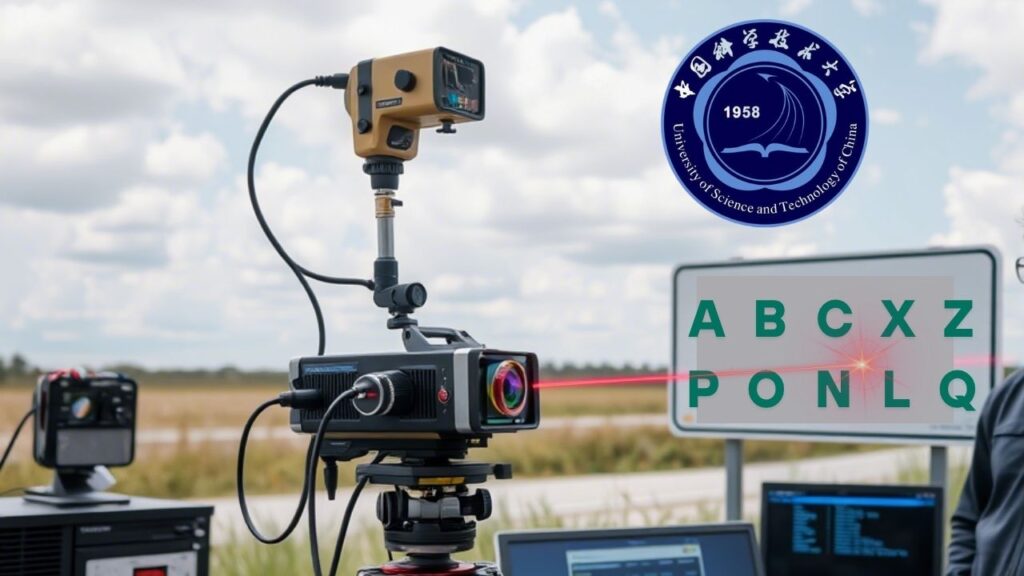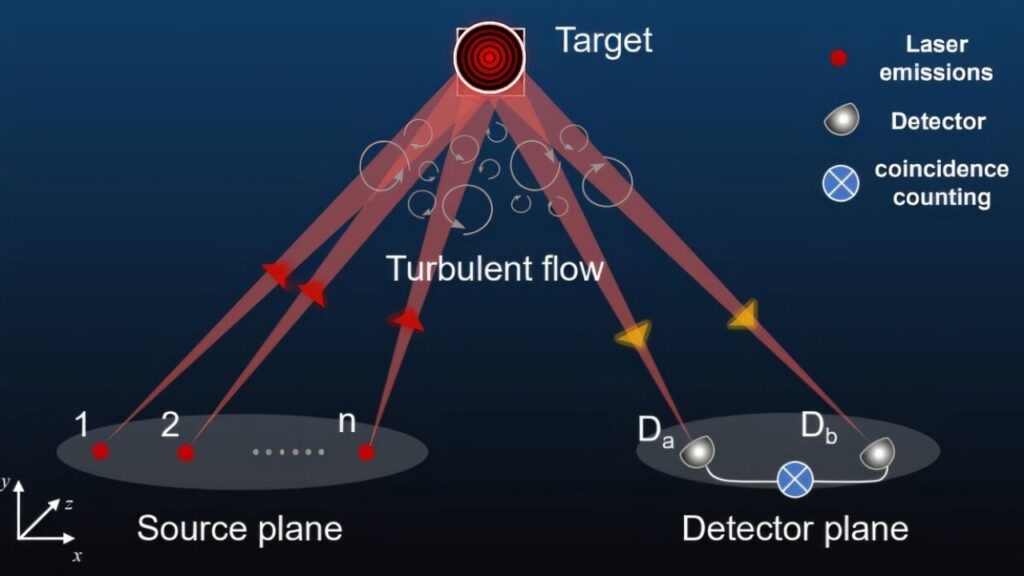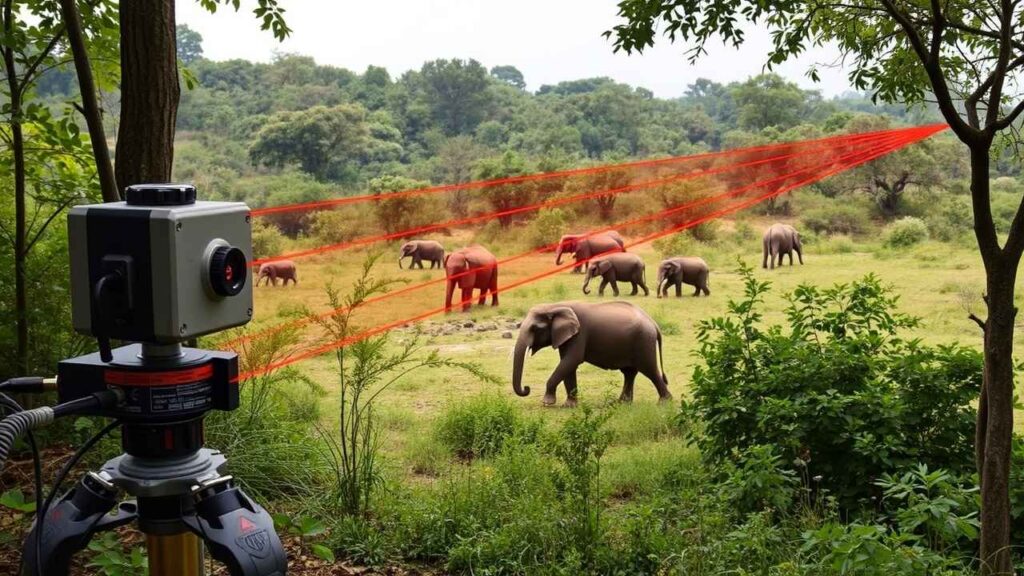China Develops High-Resolution Laser: China has unveiled a high-resolution laser system capable of reading text as small as 3 millimeters from a distance of 1.36 kilometers. This development, by researchers from the University of Science and Technology of China, marks a significant breakthrough in long-distance imaging and remote sensing. It pushes the boundaries of what laser-based technologies can achieve in surveillance, industrial inspection, and scientific research.

This innovation leverages a technique called active intensity interferometry, which enables the system to reconstruct highly detailed images by analyzing fluctuations in reflected laser light rather than capturing direct optical images. This method allows the technology to surpass the limitations of traditional telescopic systems, offering an unprecedented level of precision.
Table of Contents
China Develops High-Resolution Laser
| Feature | Details |
|---|---|
| Technology | Active Intensity Interferometry |
| Developed By | University of Science and Technology of China |
| Distance Accuracy | Reads 3 mm-sized text from 1.36 km (0.85 miles) away |
| Published In | Physical Review Letters |
| Improvement Over Diffraction Limit | 14x better resolution than standard optical limits |
| Primary Use Cases | Surveillance, archaeology, environmental monitoring, industrial inspection |
| Official Website | University of Science and Technology of China |
China’s development of a high-resolution laser capable of reading tiny text from over a kilometer away represents a significant advancement in remote imaging and optical physics. With potential applications in surveillance, environmental science, archaeology, and infrastructure monitoring, this technology could revolutionize how we observe and interpret our surroundings from a distance.
However, like all powerful tools, its ethical and legal implications must be considered carefully. As research continues, the world will watch how this innovation is used—and who gets to use it.
Understanding the Technology: What Is Active Intensity Interferometry?

Traditional imaging systems like telescopes and cameras rely on lenses or mirrors to collect and focus light. These systems are limited by the diffraction limit, which restricts resolution over long distances. The newly developed system sidesteps this barrier through intensity interferometry, a technique where multiple laser beams are used to illuminate a target and reconstruct an image based on statistical correlations in the reflected light.
How It Works: Step-by-Step
- Laser Emission: Eight synchronized infrared laser beams are aimed at the target.
- Light Reflection: The lasers strike the target surface and scatter.
- Data Collection: Two telescopes capture the reflected light’s intensity variations.
- Interference Analysis: Using advanced algorithms, the system compares fluctuations in light to determine spatial relationships.
- Image Reconstruction: A high-resolution image is created, allowing users to read fine details like tiny printed text.
This method has enabled the system to read characters smaller than a grain of rice—a feat previously impossible at such distances.
Real-World Use Cases: Where This Tech Shines
Surveillance and Security

The ability to remotely scan and analyze targets with extreme accuracy makes this system ideal for border surveillance, facility monitoring, and national defense. Government agencies could read license plates, signage, or printed documents without deploying drones or personnel.
Archaeology and Heritage Conservation

Archaeologists can now examine inaccessible sites or fragile inscriptions without physical interference. For example, petroglyphs on cliff faces could be studied without risking damage from climbing or handling.
Environmental Monitoring

Researchers tracking endangered wildlife can gather detailed visual data from afar, reducing the risk of disturbing animal habitats.
Infrastructure and Industrial Inspection
Engineers could assess bridges, towers, or power lines for wear and tear from kilometers away—saving time, reducing costs, and enhancing safety.
How It Compares with Existing Technologies
| Technology | Maximum Resolution Distance | Resolution Detail | Active or Passive |
|---|---|---|---|
| Traditional Optical Telescopes | ~300 meters | Limited by diffraction | Passive |
| Drone Imaging Systems | ~1-2 km (with zoom) | Moderate to High (line-of-sight) | Active |
| Satellite Imaging | 50 cm/pixel at best | Not effective for tiny text | Passive |
| China’s Laser System | 1.36 km | Reads 3 mm text | Active |
This laser system outperforms traditional optical setups in resolution at distance and doesn’t require flying hardware like drones.
Implications for Privacy and Ethics
While the technology offers remarkable capabilities, it also raises serious privacy concerns. The ability to read personal or sensitive information from great distances may challenge existing laws on surveillance and data privacy.
Governments and regulators will need to address:
- Legal limits on surveillance without consent
- Ethical guidelines for research and industrial use
- Export controls and misuse prevention
What Experts Are Saying
Dr. Wei Gong, the lead researcher, noted in the Physical Review Letters publication that the goal was to break through the resolution bottleneck in remote imaging. According to the paper, the technology could also be applied to biomedical imaging and space exploration in future developments.
International reaction has been mixed. While some scientists praise the ingenuity, others, particularly in the defense and human rights sectors, caution about its dual-use potential—both for civil and military applications.
Limitations and Challenges
Despite its promise, this system isn’t flawless:
- Requires Line-of-Sight: Cannot image through obstructions like trees or walls.
- Not Stealthy: The system uses visible or near-infrared laser light, which can be detected.
- Atmospheric Disruption: Fog, rain, and heat waves can scatter light, reducing accuracy.
- Power Demands: Requires stable, high-power laser sources and complex data processing.
Potential Future Developments
Research teams are already working on:
- Miniaturization for mobile or drone-based deployment
- Adaptive optics to correct atmospheric interference in real-time
- AI-enhanced image reconstruction for faster and clearer results
- Covert mode options using invisible laser frequencies
These upgrades could make the system suitable for field research, covert intelligence, and even emergency response in hazardous environments.
Reticular Materials Gain Traction in Carbon Capture Technologies
European Startups Achieve Breakthroughs in Recycling EV Battery Materials
Robotic Automation Enhances Scalability of 2D Materials for Electronic Devices
FAQs About China Develops High-Resolution Laser
Can the system work at night?
Yes. Because it uses infrared lasers, it does not depend on sunlight and can function effectively in low-light or nighttime conditions.
Is the technology available commercially?
No. As of now, this system remains in the research and development phase and is not available for public or commercial use.
Is it safe for human eyes?
Direct exposure to powerful infrared lasers can be harmful. The system must follow laser safety protocols to ensure human safety in deployment zones.
Can it image through glass or other materials?
Partially. The system needs a direct light path. Transparent surfaces might work, but opaque materials like walls or thick vegetation will block imaging.
Who is funding this research?
This project is supported by the Chinese Academy of Sciences, the National Natural Science Foundation of China, and several academic grants.



















